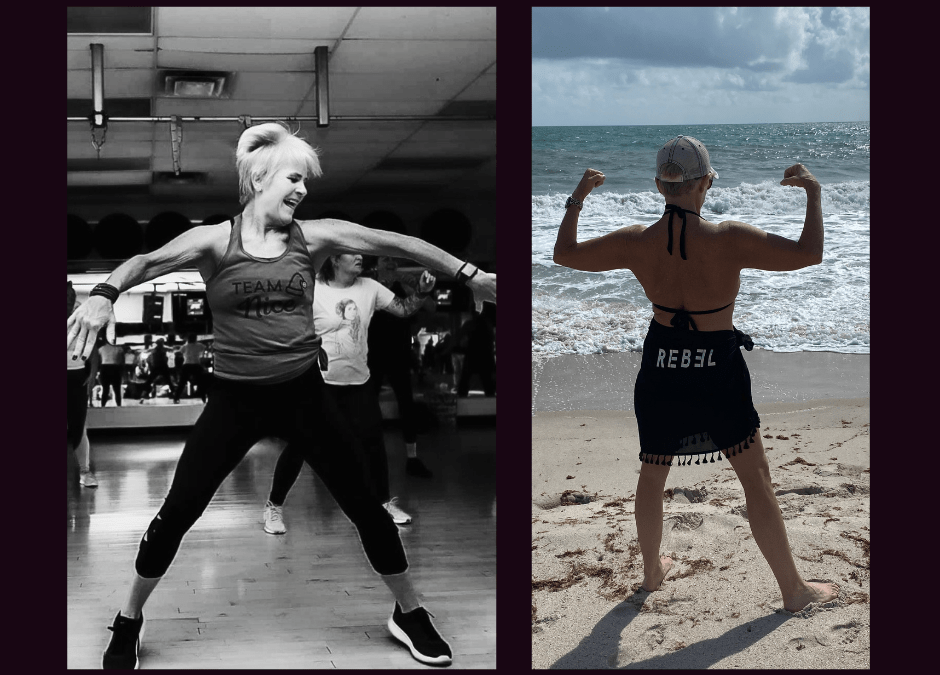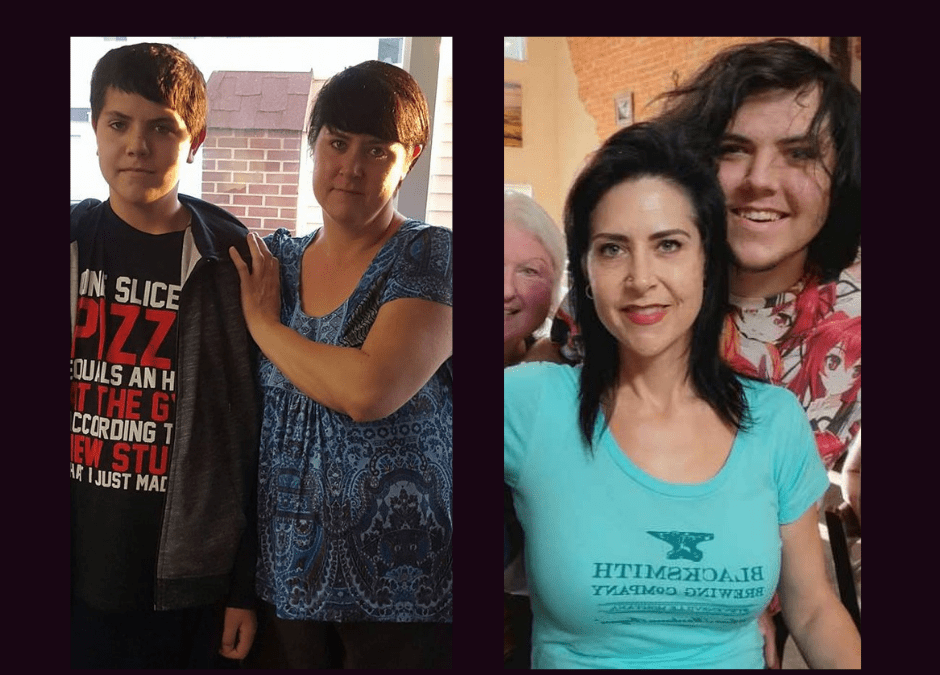‘BREAKING BAD…HABITS’
Behavior change is work! And your inner self is listening to you… if we talked to our friends the way we talk to ourselves, would we have any friends? The answer is probably no; however, thinking about change can be pretty uncomfortable and daunting. Here are a few tips to help you think identify ways to think about change that will actually facilitate it. To get you started off on the right foot, I want to bring 2 dangerous traps to your attention, and a question to ponder.
Trap #1 Dichotomous Thinking
We’ve all been guilty of this a time or two in our live. It means we view things as this or that, good or bad. We’re failing on our diet or totally crushing it. It’s this style of thinking that gets us in trouble when we are trying to make changes in our lives. It means that when we fall off the change wagon, we throw our hands in the air in a “well today’s ruined” attitude.
Avoid this trap by reminding yourself of all of the successes. Recognize your slip ups for what they are… 1 mis-step in 1,000 of correct steps is awesome… not a ruin.
Action Item
Next time you mis-step (miss your workout, or eat the french-fries), write down 3 times when you did your desired behavior (when you DID workout, when you DID eat ‘right’, etc.). This will help you stay the course and realize that you haven’t fallen off the change wagon, you merely hit a bump.
Trap #2 Don’t let want-to become have-to
Think back, and remember a time when someone told you what to do. You didn’t like it, did you? Even if it made sense, something in you probably rebelled at being told what to do. You might have even felt resentful. Well, it’s called Reactance. Which is when we have the urge to do the opposite out of a need to resist a perceived attempt to constrain our freedom of choice.
Ironically, we experience this even when WE tell OURSELVES what to do. This happens when we make things we WANT to do into things we HAVE to do.
Things we HAVE to do make us feel resentful, but things we WANT to do are associated with pleasure/reward and are perceived as internally generated. When we turn want-to into have-to we shift motivation from internal to external, and free will to coercion.
Action Item
What is one behavior you want to change and how are you talking/thinking about them? Think back to how you actually speak to yourself… do you HAVE to go on a diet? Or do you want to? Did you say last night – ‘I have to go workout’? Figure out a way to make all your behavior changes a WANT-TO, and start communicating with yourself this way. And if saying ‘I want to go on a diet’ just feels wrong (it does to me… diet is the only 4 letter word I won’t say)… think about how can you make it a want to? Try out… ‘I want to have new eating habits’ or ‘I want to eat cleaner’.
Mind your language… your mind is listening to you!
Understanding Habits
We all talk about wanting to break a bad habit, or to create a new one. But before we can really tackle changing a habit, it helps to understand what a habit is and how it works. At its most basic… a habit is an automatic response to a problem/need in a particular context.
At one point in time you had a need/problem so you tested out a particular solution, and it solved your problem or fulfilled your need. Maybe it wasn’t the BEST solution, but it was good enough, it worked. And the next time that same need/problem arose you recall the solution that had worked the last time, and do it again. Over time the thinking gets less and the ‘solution’ gets enacted automatically. And TA-DA! A habit is born.
We’ll call this need/problem the internal trigger for the behavior.
But the interesting thing about habits is that, in addition to the trigger, habits are also contextually based. Let’s make this more concrete with a real simple example. In the morning, you wake up at your house, and your mouth feels all nasty so you brush your teeth.
Getting rid of the nasty taste in your mouth is the need.
Waking up in the morning at home is the context.
Brushing your teeth is the resulting behavior.
Now let’s change the context…
Your mouth feels nasty, but now it’s afternoon and you’re out and about so you chew gum.
Notice, the trigger was the same, but since the context was different, the resulting behavior was different.
What this means is that both the need and the context are linked to the behavior, and that over time the behavior can result even without the trigger because the context is associated with the behavior as much as the trigger.
Let’s say you’ve had a frustrating day at work. So when you come home you have some wine, and you feel better. Then the next day was also frustrating, and when you come home you recall that you have some wine yesterday and that helped, so you do that again. Over time, a habit forms. After awhile, work is no longer frustrating, but when you come home you still have that wine. Why? You guessed it. The context of coming home has become an external trigger for the behavior.
Action Items
Examine a habit you want to change…
1. What’s the trigger? What need/problem are you wanting to solve? Dig deep here. What’s the real issue?
2. In what context does the behavior happen? Is it at home? Is it a certain time of day? Are there certain people around?
In order to change a habit, we need to first understand what need we have AND we need to understand in what context it happens.
Breaking Habits
When we think about our habits, we tend to think in broad terms, on an aggregate level, instead of the sub-actions that make up the habit.
We think… workout habit… or… wine after work habit… But frequently we don’t recognize all the sub-actions that go into that habit.
When we first start to break a habit down we think… change into workout clothes, drive to the gym, workout. Or… come home, get wine, drink. But we can break it down even further, which is where the real action (and change magic) is. The reason I say this, is that when we can identify all the sub-actions of a habit we can start to make tiny tweaks that begin to alter the nature of the habit. Furthermore, it moves the habit from an automatic response that we don’t think about into something more thoughtful, which gives us more control.
Let’s take the wine after work habit, and expand it out to encompass the sub-actions that we don’t typically recognize as part of the habit.
We come home from work… go to bed room… take off work clothes…put on something comfy… wash make-up off… go to kitchen… get wine glass out of the cabinet… get bottle of wine from the rack… open the draw to get the wine opener… open bottle of wine… pour wine… walk to couch… drink wine… go back to kitchen… pick up bottle… pour more wine… go back to couch… drink more wine…
This is so habitual to us that we don’t even really recognize what we’re doing, and the next thing we know, the whole bottle is gone! BUT what if we put the wine in a different place, or the wine opener now lives in the dining room instead of kitchen drawer? What if we made a ‘rule’ that every glass of wine deserves a fresh wine glass? AND that wine glasses are washed by hand? Or that the glass has to be washed between glasses of wine? The options are endless!
What you’re doing is you’re putting little points of friction in your process deliberately to not only encourage thoughtful action, but to also, just make it ‘harder’. That’s one thing you should recognize about human beings… we’re lazy. I don’t mean that in a bad way, but we’re all about conserving energy and minimizing effort. So use it to help you!
Action Item
· Detail out the sub-actions of your habit… not just the habit itself but what proceeds the habit? What sets you up?
· Pick 2 sub-actions and determine how you can alter them
· Do it! Make the change
Sub-action idea changes (but really the sky is the limit)
Workout related
· When you come home, instead of changing into comfy clothes, put on workout clothes (including shoes).
· Change around your clothes in the drawers/closet. Put your workout clothes in the most visible place.
· Pick out your workout clothes at the beginning of the week, for the number of workouts you plan. Have them laying out (won’t it feel good to make it all the way through that pile of clothes? That’s like checking something off your list!)
Eating related
· When you eat, only eat sitting at the table with a full place set (even if it’s just 1 cookie! No more popping it in your mouth on the way to the couch). You can eat whatever you want, but you have to set the table to eat it.
· Pack food in small baggies when you buy it, and you can only take out one baggie of food at a time to eat it.
You Got This
Behavior change is not a set and forget it type of thing. One, it’s not that quick to embed a new pattern into your life (it takes time, effort, and tweaking to get it just right). And two, once it is embedded, you should routinely go back to check your habit(s) to make sure they are still serving in your best interest. And if they aren’t… change them! You know how.
It’s easy to get into a routine, and busy with life and not check in with your habits. But it’s critical. One way to help you do this… set a calendar alert for once a month to check in with your self about your new habit… is it sticking? Is it working the way you want it to? If not, tweak it until it is.
Remember, the key is to put things in your environment that make it easy to do the behavior that you want to do, and difficult to do the behavior you don’t. And that includes making it easy for you to do your check-in… you can’t count on your memory, so create an easy mechanism that does that for you.
XO Tev
Written by Tevya Harley Behavioral Scientist and REB3L



